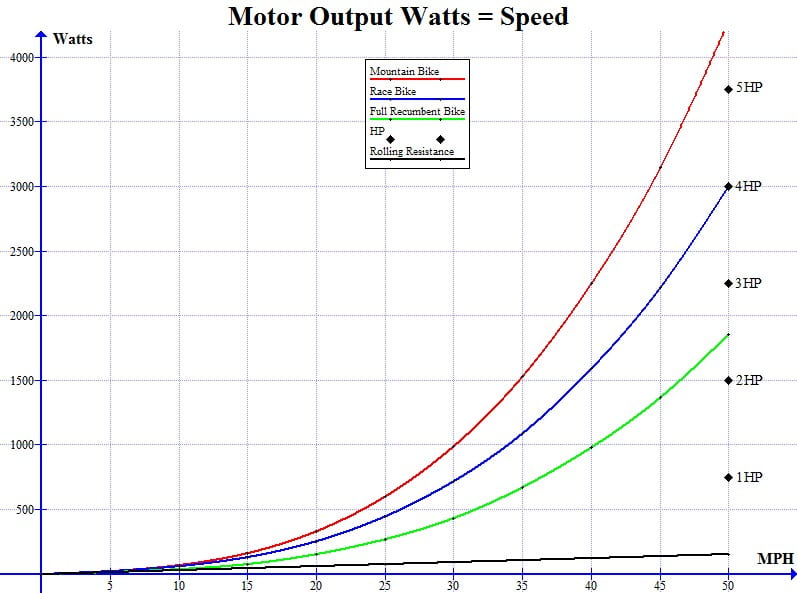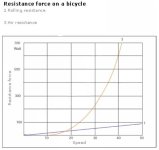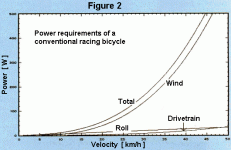"
What exactly is rolling resistance?
Rolling resistance is the energy that is lost when the tire is rolling and the main reason for loss of energy is the constant deformation of the tire. In addition to rolling resistance, there are also other resistances that have to be overcome when riding a bicycle.
Other resistance factors.
Air resistance rises squared with increased speed. At a straight-line speed of 20 km/h on the flat, air resistance is the main resistance force.
Energy is also required to accelerate. For instance, the weight of the wheels is of great importance when this mass has to be brought up to rotation.
When riding uphill, the main resisting force to overcome is the gradient resistance (descending force).
In addition to these, there are other friction resistances in the chain and all of the other moving parts. Yet in a well-serviced bicycle, these represent a very minor part of the total resistance.
Which factors affect rolling resistance?
Tire pressure, tire diameter, tire construction, tire tread and other factors all have an effect on rolling resistance. The higher the tire pressure, the less is tire deformation and thus the rolling resistance.
Small diameter tires have a higher rolling resistance at the same tire pressure, because tire deformation is proportionally more important, in other words the tire is "less round". Wider tires roll better than narrow ones. This assertion generally generates skepticism, nevertheless at the same tire pressure a narrow tire deflects more and so deforms more.
Obviously, tire construction also has an effect on rolling resistance. The less material is used, the less material there is to deform. And the more flexible the material is, such as the rubber compound, the less energy is lost through deformation.
Generally, smooth treads roll better than coarse treads. Tall lugs and wide gaps usually have a detrimental effect on rolling resistance.
Why do wide tires roll better than narrow ones?
The answer to this question lies in tire deflection. Each tire is flattened a little under load. This creates a flat contact area.
At the same tire pressure, a wide and a narrow tire have the same contact area. A wide tire is flattened over its width whereas a narrow tire has a slimmer but longer contact area.
The flattened area can be considered as a counterweight to tire rotation. Because of the longer flattened area of the narrow tire, the wheel loses more of its "roundness" and produces more deformation during rotation. However, in the wide tire, the radial length of the flattened area is shorter, making the tire "rounder" and so it rolls better.
Why do Pros ride narrow tires if wide tires roll better?
Wide tires only roll better at the same inflation pressure, but narrow tires can be inflated to higher pressures than wide tires. However, they then obviously give a less comfortable ride. In addition to this, narrow tires have an advantage over wide ones at higher speeds, as they provide less air resistance.
Above all, a bicycle with narrow tires is much easier to accelerate because the rotating mass of the wheels is lower and the bicycle is much more agile. At constant speeds of around 20 km/h, the ride is better with wider tires. In practice, the energy saving is even greater than in theory as the elasticity of the tires absorbs road shocks, which would otherwise be transferred to the rider and so saves energy."
Source - Largely Quoted - http://www.schwalbetires.com/tech_info/rolling_resistance

 "Speed" is in KPH.
"Speed" is in KPH. "Speed" is in KPH.
"Speed" is in KPH.






